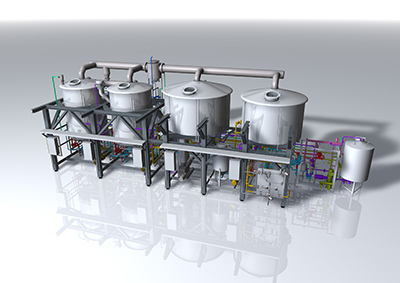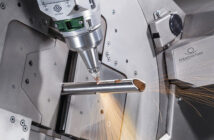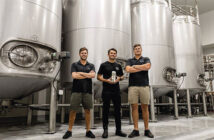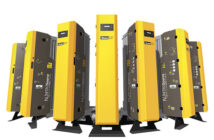June 2014
The trend towards craft beers shows how many consumers are quite ready to reward individualised product concepts. So flexibility in the production process is an imperative.
Learning the lessons from 'big' brewing technology and using them for making specialty beers in small batches: Krones AG has achieved this balancing act with the CombiCube system. The principle of 'combinable cubes' is this: "Think big, act flexible, and produce small". CombiCube is predestined for the smaller specialty breweries with up to 250,000 hectolitres of sales-quality beer, ones that handle a diverse range of types and seasonal products. Large industrial-scale breweries can use the CombiCube system to brew small batches for their specialty beers, or as a pilot installation or a mobile brewery. The system is modularised in construction, permits a customised design configuration, and can be easily expanded. The type and number of vessels can be selected to suit the requirements involved. With CombiCube, breweries have an option for making top-quality products using different brewing processes and high volume variance.
Three components for brewhouse, filtration and cellarage
The three 'cubes' are the CombiCube B brewhouse, the CombiCube C cellerage unit and the CombiCube F filter. Role models from the large installations, like ShakesBeer, Twin- Flow System or TwinPro have been used: their functionalities are retained, the construction simplified, and the advantages of the 'small' size exploited. This renders field-proven, operator-friendly technology accessible to the smaller and mid-tier breweries as well.
CombiCube B- the compact brewhouse
The compact brewhouse covers an output range of 40 to 100 hectolitres of hot cast wort with up to ten brews a day and original gravities of up to 15 degrees Plato with 98.5 percent extract yield. Combinations can be put together from the following vessels: mash tun, mash copper/cereal cooker, lauter tun/mash lauter tun, wort copper/mash wort copper and whirlpool.
CombiCube C- manual work now automated
The CombiCube C is the perfect choice for breweries who are operating a classical fermentation cellar, with the tanks linked up by means of hoses, but who still want to reap the advantages of a process control system and are therefore planning to refurbish their cold area. The newly developed concept combines the freedoms of a hose-type cellar with a perfect overview of whatÕs happening throughout the fermentation cellar.
It offers an output range for filling and draining operations of up to 110 hectolitres an hour, a yeast harvesting capability of six hectolitres an hour, and is thus appropriately dimensioned for the CombiCube series or breweries with up to 250,000 hectolitres of sales-quality beer. The CombiCube C handles the following functions: Fill fermentation tank, Hose young beer, Yeast harvest, Transfer to filtration, Fill bright-beer tank, and Transfer to the filler.
CombiCube F- modularised filtration
Five functionally defined modules are optimally synergised in the CombiCube F, and can be appropriately combined with each other to suit the client's needs: the filtration module, the buffer module, the carbonation module, the disposal module and the CIP module. Subsequent expansions present no difficulties, thanks to the modularised construction. The wide regulation options for the filtration output, made possible by the twin-flow principle, offer simple solutions for complex job profiles. The CombiCube F operates in a nominal output range from 26 to 104 hectolitres an hour, with continuous running times of up to 14 hours. It is available in six different sizes.
Positive aspects for the natural environment
In terms of minimised environmental impact, the CombiCube system scores well in terms of high energy-efficiency, thanks not least to the use of frequency-controlled motors and of Evoguard valves for minimised compressed-air consumption. A high level of media-efficiency is assured, due to low consumption of primary energy and water, plus reduced cleaning consumption levels and times. Eco-compatibility is guaranteed by the use of ecological cleaning agents and minimised lubricant consumption.





























































































